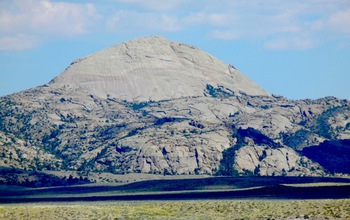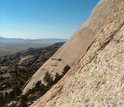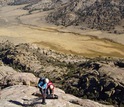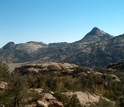Hola amigos: A VUELO DE UN QUINDE EL BLOG., hemos recibido información de la Fundación Nacional de Ciencias de Los Estados Unidos, sobre un descubrimiento en sentido que en la pasado; hubieron super volcanes muy activos en el Parque Nacional de Yellowstone, lamentablemente esa amenaza telúrica se mantiene y hay estudios que cada 600,000 mil años hay erupciones gigantescas de volcanes en apariencia que están dormidos, y que al despertar pueden afectar con una erupción toda la atmósfera terrestre y la vida sobre La Tierra. Según los estudios de los vulcanólogos ya estamos en ese trayecto y puede ser hoy, mañana, pasado o 50 mil años que erupcionará el Gigante Yellowstone.
More information....http://www.nsf.gov/discoveries/disc_summ.jsp?cntn_id=138519&WT.mc_id=USNSF_51&WT.mc_ev=click
Geologists go 'back to the past'
 Credit and Larger Version |
Geophysical monitoring of the ground above active supervolcanoes, like the one located in Yellowstone National Park, shows that it rises and falls as magma moves beneath the surface of the Earth.
Magma located under areas that include the Yellowstone region and the western margin of North and South America can erupt violently, spewing vast quantities of ash into the air, followed by slower flows of glassy, viscous magma.
But what do these subterranean magma chambers look like, and where does the magma originate? Modern, active volcanoes cannot answer those questions, scientists say.
Back to the past
Instead, a new study by University of Wyoming researchers suggests scientists can go back to the past to study present-day solidified magma chambers where the erosion has removed overlying rock, exposing granite underpinnings.
The study, funded by the National Science Foundation (NSF), and its findings are outlined in a paper published in the June issue of American Mineralogist, the journal of the Mineralogical Society of America.
"Every geology student is taught that the present is the key to the past," says geologist Carol Frost, director of NSF's Division of Earth Sciences, on leave from the University of Wyoming. "In this study, we used the record from the past to understand what's happening in modern magma chambers."
Secrets in a batholith
One such large granite body, the 2.62 billion-year-old Wyoming batholith, extends more than 125 miles across central Wyoming.
University of Wyoming earth scientist Davin Bagdonas traversed the Granite, Shirley and Laramie Mountains to examine the batholith. He found remarkable uniformity, with similar minerals throughout.
Says Bagdonas, who worked on the project with Frost, "only minor variations were observed in granite near the roof and margins."
That homogeneity, or sameness, indicates the crystallizing magma was well-mixed. However, more subtle variations across the batholith show that the magma formed by the melting of multiple rock sources that rose through several conduits.
Large bodies composed of biotite granite, such as the Wyoming batholith, are more common in the Neoarchean era (2.8 billion-2.5 billion years ago) than in younger terrains. The reason may relate to higher radioactive heat production in the past, which provided power to drive extensive granite formation.
"If these ancient rocks are analogs for the magma systems underlying modern supervolcanoes, then explosive volcanism may have been far more abundant in Earth's past than it is today," the researchers conclude in their paper.
| -- | Cheryl Dybas, NSF (703) 292-7734 cdybas@nsf.gov |
| -- | Chad Baldwin, University of Wyoming (307) 766-3257 cbaldwin@uwyo.edu |
Investigators Carol Frost
B. Ronald Frost
Kevin Chamberlain
B. Ronald Frost
Kevin Chamberlain
Related Institutions/Organizations University of Wyoming
Related Programs Tectonics
Total Grants $225,135

View from below the summit of Lankin Dome, showing granite that caps the peak.
Credit and Larger Version

Scientists Carol Frost and Davin Bagdonas prepare for the next pitch up Lankin Dome.
Credit and Larger Version

Carol Frost and Davin Bagdonas making observations near the summit of Lankin Dome.
Credit and Larger Version

Granite of the Wyoming batholith exposed in Wyoming's Granite Mountains.
Credit and Larger Version
The National Science Foundation (NSF)
Guillermo Gonzalo Sánchez Achutegui
ayabaca@gmail.com
ayabaca@hotmail.com
ayabaca@yahoo.com
Inscríbete en el Foro del blog y participa : A Vuelo De Un Quinde - El Foro!

No hay comentarios:
Publicar un comentario